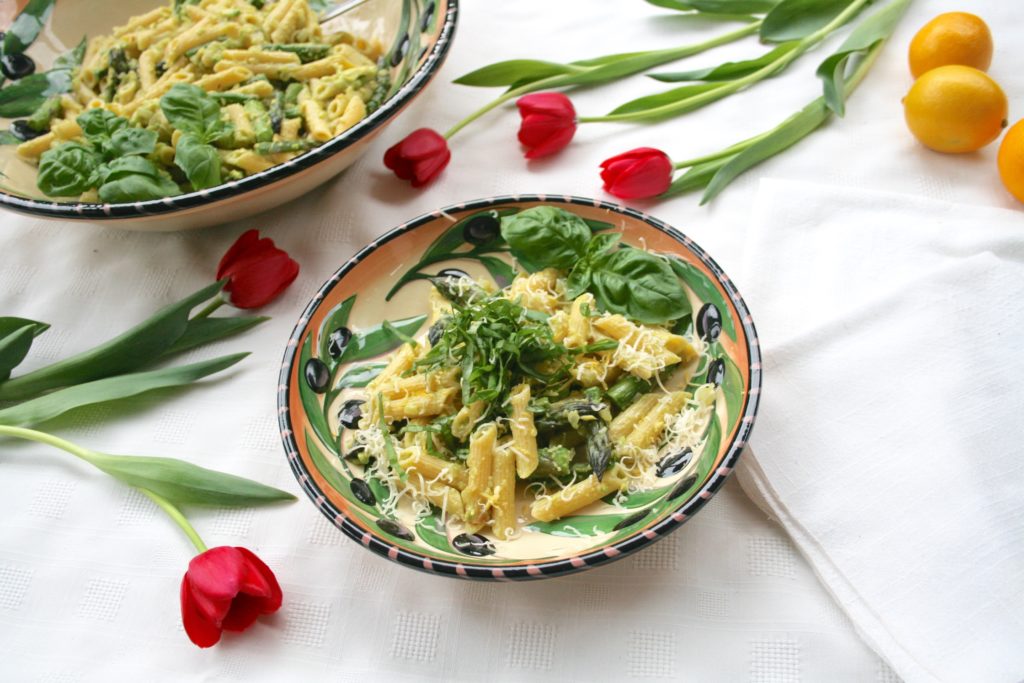 Asparagus is a fresh, nutritious vegetable indicative of spring. It is bursting with a range of vitamins, minerals and antioxidants but what really sets it apart is its inulin content. Inulin is a unique type of carbohydrate in that it doesn’t get fully broken down like other carbohydrates do. It makes it all the way to the large intestine and becomes food for the good bacteria. Continue Reading →
Asparagus is a fresh, nutritious vegetable indicative of spring. It is bursting with a range of vitamins, minerals and antioxidants but what really sets it apart is its inulin content. Inulin is a unique type of carbohydrate in that it doesn’t get fully broken down like other carbohydrates do. It makes it all the way to the large intestine and becomes food for the good bacteria. Continue Reading →
Roasted Tomatoes
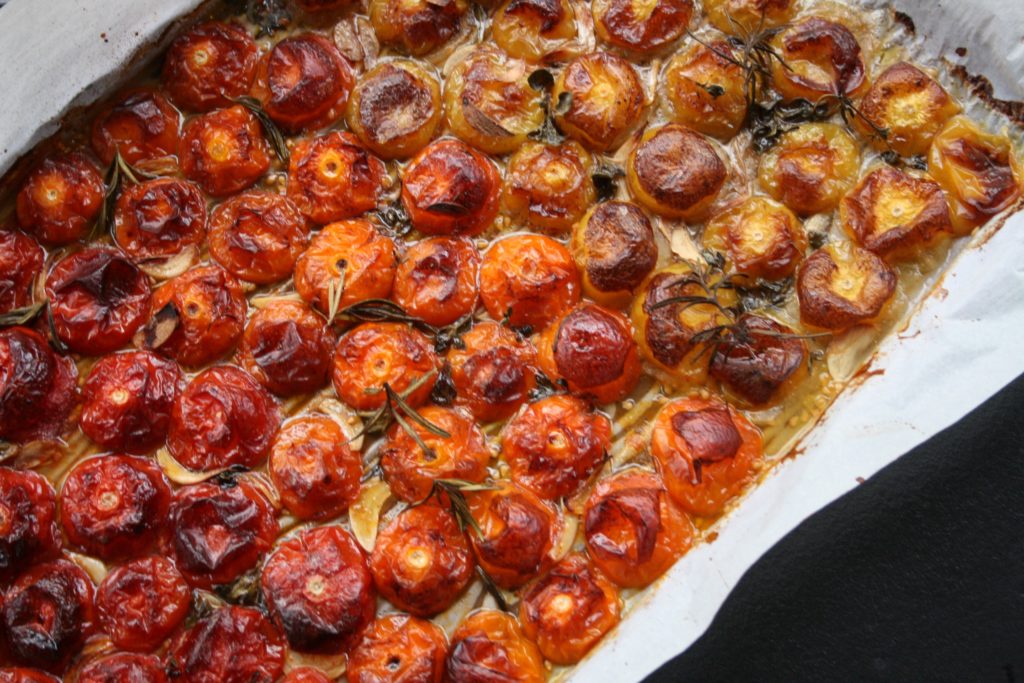 Roasting tomatoes maximizes flavour even when the tomatoes used are more on the bland side. It may not be the most practical way to prepare them, the roasting takes a while and the volume is severely decreased, but oh they are delicious. For such a simple vegetable dish it really packs a lot of flavour and can bring something special to a whole range of meals. It is great on toasted crusty bread or english muffins, perhaps with some avocado or some freshly grated parmesan. It can also liven up pasta and eggs or create a base for sauces, soups or stews. Extras can be portioned out and frozen for easy access. Continue Reading →
Roasting tomatoes maximizes flavour even when the tomatoes used are more on the bland side. It may not be the most practical way to prepare them, the roasting takes a while and the volume is severely decreased, but oh they are delicious. For such a simple vegetable dish it really packs a lot of flavour and can bring something special to a whole range of meals. It is great on toasted crusty bread or english muffins, perhaps with some avocado or some freshly grated parmesan. It can also liven up pasta and eggs or create a base for sauces, soups or stews. Extras can be portioned out and frozen for easy access. Continue Reading →
Berry Chia Pudding Parfaits
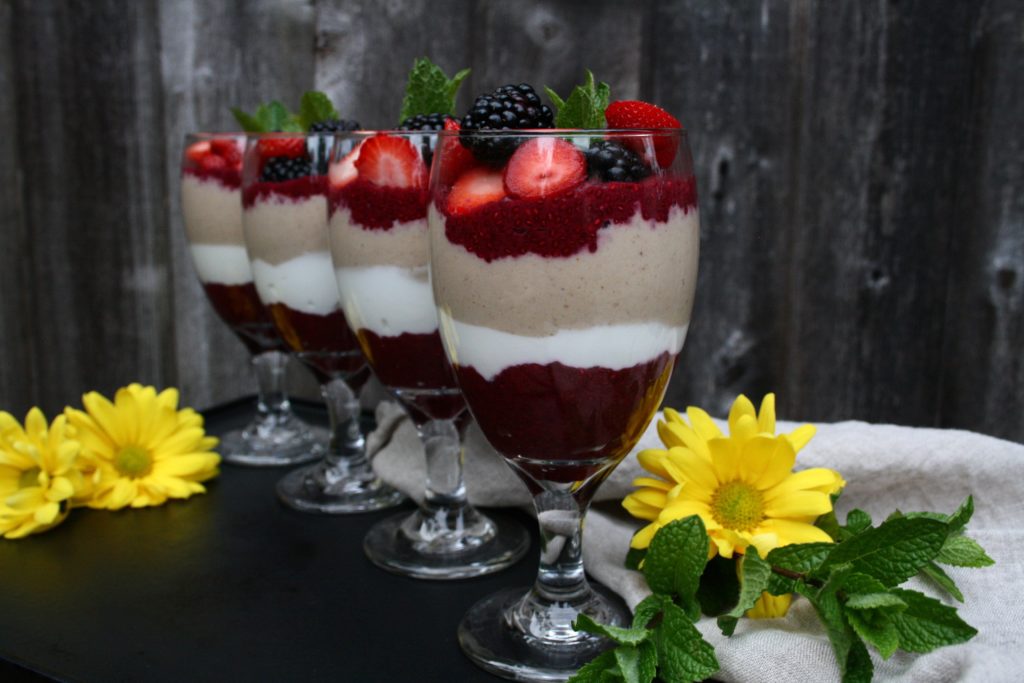 There are currently a couple pretty trendy dishes to make from chia seeds- chia pudding and chia jam- and this is sort of a combination of the two. Along with some yogurt and a thick smoothie it makes for a very healthy parfait with a large range of vitamins, minerals and antioxidants. Continue Reading →
There are currently a couple pretty trendy dishes to make from chia seeds- chia pudding and chia jam- and this is sort of a combination of the two. Along with some yogurt and a thick smoothie it makes for a very healthy parfait with a large range of vitamins, minerals and antioxidants. Continue Reading →
Strawberry Power Balls
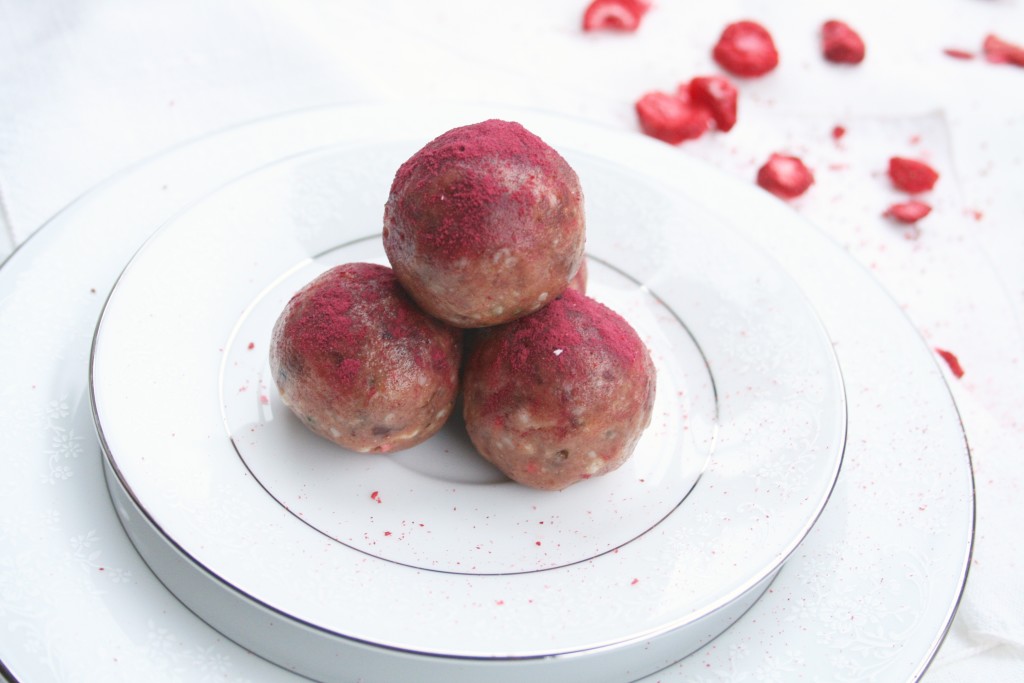 Power balls a.k.a. energy balls are exactly what they sound like- little nutrient-dense balls of food that provide a burst of power or energy. They are jam packed with a good balance of fats, protein and carbs to provide a boost during an afternoon energy slump or to fuel or refuel before or after a workout. Continue Reading →
Power balls a.k.a. energy balls are exactly what they sound like- little nutrient-dense balls of food that provide a burst of power or energy. They are jam packed with a good balance of fats, protein and carbs to provide a boost during an afternoon energy slump or to fuel or refuel before or after a workout. Continue Reading →
Fried Quinoa
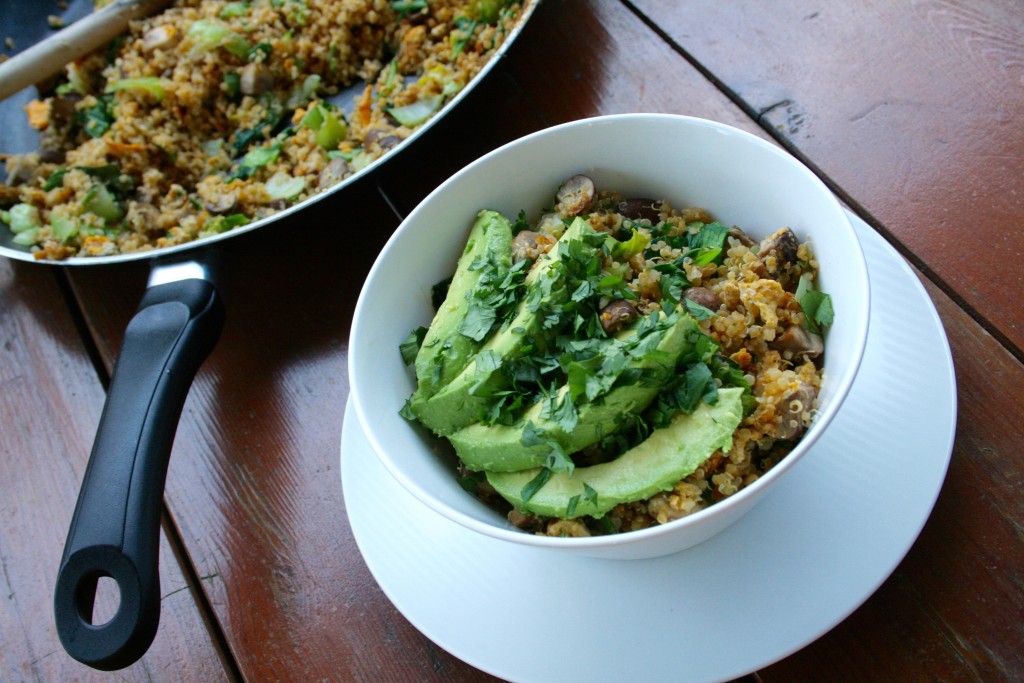 One of the main keys to eating healthy is being prepared. An easy, regular way to do this is to cook a large pot of whole grains at the start of the week and use it to create fresh, fast meals. Asian style fried brown rice, or quinoa in this case, is something my brother and I have been making pretty regularly lately. He takes the extras for lunch, topped with some baked, diced chicken to make it extra filling. Brown rice, millet or any other whole grain can be used instead of quinoa, they all work pretty well and have subtle, nutty flavours that go well with eggs, tamari (or regular soy sauce) and any vegetables desired. Continue Reading →
One of the main keys to eating healthy is being prepared. An easy, regular way to do this is to cook a large pot of whole grains at the start of the week and use it to create fresh, fast meals. Asian style fried brown rice, or quinoa in this case, is something my brother and I have been making pretty regularly lately. He takes the extras for lunch, topped with some baked, diced chicken to make it extra filling. Brown rice, millet or any other whole grain can be used instead of quinoa, they all work pretty well and have subtle, nutty flavours that go well with eggs, tamari (or regular soy sauce) and any vegetables desired. Continue Reading →
Quinoa Greek Salad
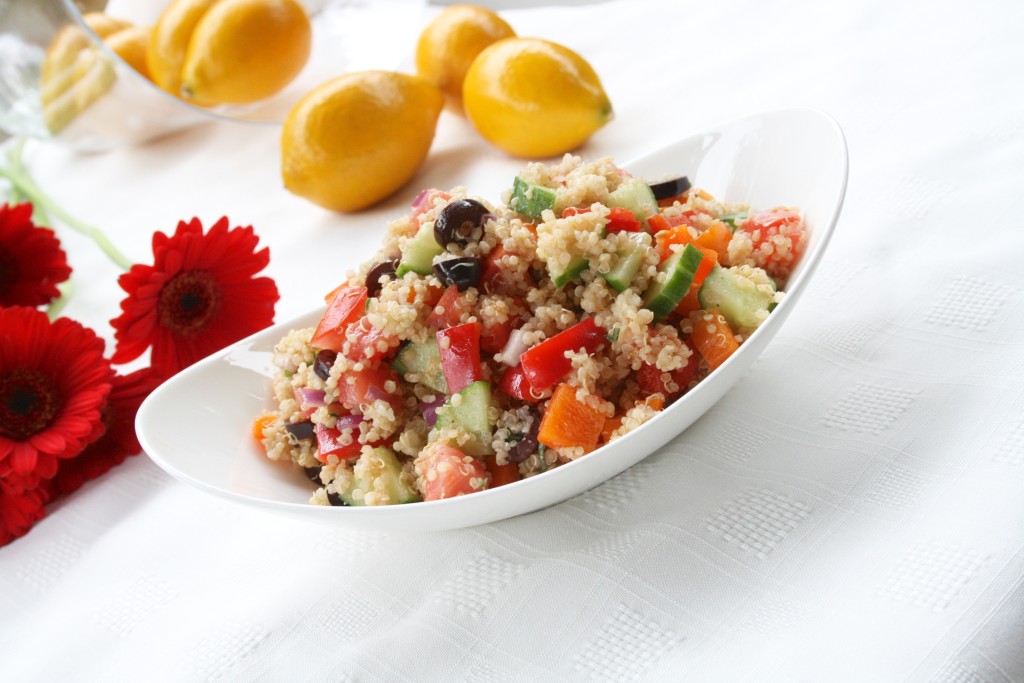 Quinoa is, like most whole grains, a great source of several minerals and B vitamins and fiber but what makes it special and unique is the type of protein it contains. Protein is made up of building blocks called amino acids and there are 8 which we must obtain through food (our bodies can make the other ones on their own as needed). I like to think of each as a different colour of lego and most plant foods are missing one or two colours. Quinoa, an ancient grain prized since ancient times is technically a seed and it contains all 8 amino acids needed- making it a “complete protein”. Continue Reading →
Quinoa is, like most whole grains, a great source of several minerals and B vitamins and fiber but what makes it special and unique is the type of protein it contains. Protein is made up of building blocks called amino acids and there are 8 which we must obtain through food (our bodies can make the other ones on their own as needed). I like to think of each as a different colour of lego and most plant foods are missing one or two colours. Quinoa, an ancient grain prized since ancient times is technically a seed and it contains all 8 amino acids needed- making it a “complete protein”. Continue Reading →
